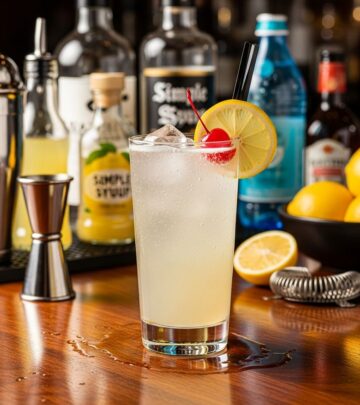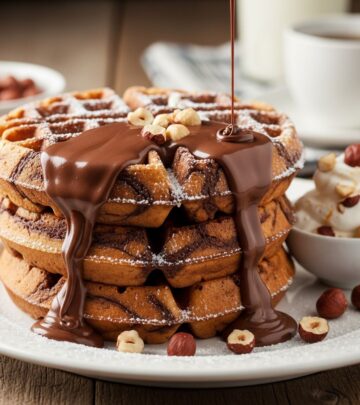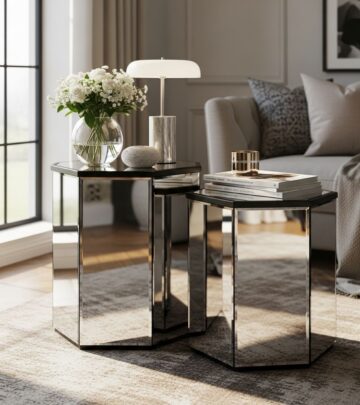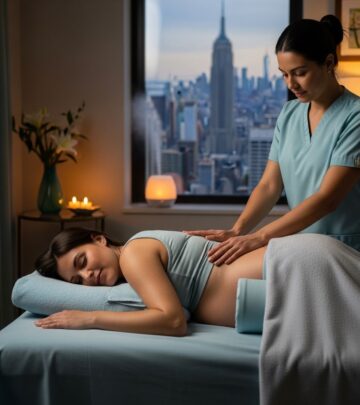Ponytails at the Office: Professional or Not?
Examining the debate on ponytails as professional hairstyles in the modern workplace, with practical tips and style advice.

Few topics in the realm of professional style for women generate as much debate—and as many nuanced opinions—as ponytails in the workplace. Are they too casual for a business setting, or do they project an image of effortless efficiency? This article examines the varied perspectives on ponytails at work, explores what makes a ponytail professional (or not), and provides advice for anyone navigating workplace hair expectations.
Introduction: The Modern Workplace Hair Dilemma
The question of whether ponytails are appropriate in a professional office environment has persisted for decades. Some argue that a neat, low ponytail exudes polish and maturity, while others contend it can appear too casual or youthful for serious business dealings. Added to the mix are trends, cultural influences, and individual differences in hair type and office politics. In this discussion, we break down arguments, anecdotal experiences, and expert advice to answer one key question: Should you wear a ponytail to the office?
Why Are Ponytails Such a Workplace Controversy?
Workplace grooming standards often reflect broader societal attitudes about age, authority, and professionalism. Hair—particularly for women—carries significant visual weight in shaping perception. Here’s why ponytails are a hot topic:
- Youth vs. Maturity: Some believe ponytails create a youthful, perhaps less authoritative, appearance. Others feel a well-groomed ponytail is classic and ageless.
- Perceived Professionalism: While some offices see ponytails as tidy and practical, others consider them informal compared to updos or hair worn down and styled.
- Trends and Generational Shifts: As workplace dress codes evolve and offices become less formal, hairstyles once deemed questionable (like the low ponytail) are more widely accepted.
- Hair Diversity: Not every professional can easily achieve a glossy blowout or intricate chignon on a busy morning. For many, the ponytail represents the simplest route to a “put-together” look.
What Makes a Ponytail Professional?
While the debate continues, there is agreement on several aspects that differentiate an office-appropriate ponytail from a casual or unkempt look. Consider these guidelines:
- Neatness Is Essential: A clean, secure ponytail with minimal flyaways or frizz is more likely to be considered polished.
- Height Matters: Very high ponytails (“cheerleader” or “pageant” style) are generally viewed as less professional than low or mid-level options.
- Simplicity in Accessories: Neutral, understated hair ties or accessories blend best with business attire.
- Volume and Structure: A softly twisted or half-up ponytail can create volume without sacrificing order.
- Face and Hair Type: Ultimately, the right ponytail for you depends on your face shape and hair texture; the priority is always a style that stays put and looks intentional.
Office Etiquette: General Rules and Anecdotes
Commonly Shared Workplace Rules
- Limit the frequency: Some recommend not relying on ponytails every day—experiment with different looks when possible for versatility.
- Lower is usually better: Side ponytails or very high ponytails are typically discouraged in formal environments.
- Meeting and client considerations: Some professionals prefer to wear their hair down, in a bun, or a twist when meeting clients or attending important meetings, reserving the ponytail for in-office tasks or late evenings.
- Tailor to your office culture: The acceptability of ponytails can vary widely; some offices hold to stricter interpretations of “business professional,” while others are more relaxed.
Professional Testimonies
Many professionals share mixed experiences. For example, a law associate recounted how her colleague was “horrified” that a summer intern wore a ponytail to an interview—though most others saw no issue, so long as the look was tidy. Businesswomen in France, for instance, are known for pairing ponytails with elegant scarves and tailored suits, achieving a chic and effortless sophistication admired by many.
Others note that for those with unmanageable or very thick hair, a ponytail may be the only practical option that keeps hair neat and professional-looking throughout the day.
Ponytail Styles: What Works Best for the Office?
Not all ponytails are created equal! Here are the most common office-friendly variations, along with descriptions and style advice:
| Ponytail Style | Professional Assessment | Key Tips |
|---|---|---|
| Low Ponytail | Most universally accepted, considered neat and mature | Keep it sleek and close to the nape, use simple elastics |
| Mid Ponytail | Appropriate if hair is styled smoothly and held securely | Avoid excessive volume at the crown; choose subtle parting |
| High Ponytail | Riskier—can appear youthful; best avoided in conservative environments | Keep it tight and neat if you must, skip flashy accessories |
| Side Ponytail | Generally discouraged for professional offices | Slight side variation may be acceptable if understated |
| Twisted or Braided Ponytail | Chic and modern when executed neatly | Incorporate subtle twists or braids for style; avoid messiness |
Accessories: What Should You Use?
- Elastics: Thin, neutral-colored hair ties are least distracting.
- Fabric Wraps or Scarves: Slim black scarves tied in a simple bow can add elegance—provided they are restrained and match your attire.
- Avoid: Bright scrunchies, large bows, sparkly clips, or youthful accessories in most formal settings.
Tip: Keep a small box of discreet hair ties and bobby pins in your desk for unexpected moments or late work sessions.
Considerations for Different Ages and Hair Types
An issue that frequently arises is whether certain styles are more suitable for professionals in their 20s versus 40s, or for those with curly versus straight hair. The consensus is:
- Age: While a tidy low ponytail is ageless, very high styles or playful accessories may read as youthful. Professionals over 30 are generally advised to opt for understated, elegant ponytails if choosing this style.
- Hair type: Anyone with difficult-to-manage hair, such as natural curls or unruly layers, can use subtle ponytail variations (like twists or half-ups) to control volume and present a neat look.
When Are Ponytails Inappropriate?
- Important client meetings, interviews, or court appearances in highly traditional industries may call for more formal hairstyles.
- Ponytails styled very high, off to the side, or with excessive volume can undermine a professional image in conservative environments.
- Messy, rushed, or unbrushed ponytails send the wrong message—always check your look before stepping into a meeting or client call.
- Novelty or playful accessories are usually never suitable for a professional office.
Global and Cultural Perspectives on Ponytails
Observations from different cities and countries reveal regional interpretations of workplace hair. For example:
- France: Many chic businesswomen prefer tidy, low ponytails with a scarf for subtle flair. The overall impression remains polished and put-together, never fussy.
- United States: Office standards can vary between cities; generally, the northeastern U.S. leans toward conservatism, while west coast offices are often more relaxed about hair styles.
- Elsewhere: Some offices uphold strict corporate grooming codes. In these environments, traditional updos or short, structured haircuts are more common.
Cultural perceptions and generational attitudes continue to influence what is considered the gold standard for professional hair. Adapting your style to your location and company norms is key.
Ponytails vs. Other Professional Hairstyles
How does the ponytail stack up against classic workplace hairstyles like buns, twists, or loose, styled hair? Here’s a quick comparison:
| Hairstyle | Pros | Cons |
|---|---|---|
| Ponytail (Low or Mid) | Quick, versatile, controls flyaways, works for most hair types | Can appear too casual if messy or too high |
| Chignon or Bun | Classic, polished, highly professional | Can be time-consuming, hard to master |
| French Twist | Elegant, timeless, ideal for high-stakes meetings | Requires effort and tools, may not work for all |
| Loose Hair | Can be elegant if styled; minimal prep for certain types | Risk of messiness, distracting face-touching or shedding |
| Braids | Secure, neat, stylish when done right | Intricacy can be distracting; simple braids are safest |
Tips for Making Your Ponytail Work at Work
- Invest in high-quality hair ties that don’t snag or damage hair
- Secure stray hairs with bobby pins or use a small amount of smoothing product
- Practice your go-to style to ensure it holds all day—consider a light hair spray
- Keep accessories subtle and professional; avoid styles that recall childhood trends
- Consider a quick mirror check before major meetings to keep your style fresh
Frequently Asked Questions (FAQs)
Q: Can I wear a ponytail to an interview?
A: It’s best to err on the side of formality for interviews, especially in traditional industries like law and finance. A sleek, low ponytail can suffice if styled very neatly, but buns and twists may be a safer bet.
Q: Are side ponytails ever okay for the office?
A: Side ponytails are generally not considered professional for most corporate environments due to their association with playful or retro looks. A subtle side part—with the ponytail still centered at the back—can be acceptable.
Q: Is there an age cutoff for office ponytails?
A: There is no definitive age limit. However, more understated and classic ponytail styles are recommended as you progress in your career to project maturity and professionalism.
Q: What if my hair won’t stay up or is too thick?
A: Look for hybrid styles like a twisted half-up ponytail, use extra-strong elastics, or incorporate a light braid to secure hair. For very thick or curly hair, a low ponytail or a simple bun can help maintain order and polish.
Q: What are the best products or accessories to use?
A: Use snag-free, neutral hair ties, discreet bobby pins for flyaways, and a smoothing serum for shine. Scarves or ribbons should be narrow, understated, and coordinate with your work attire if used.
Final Thoughts: The Ponytail’s Place in Professionalism
Ponytails, when executed with neatness and intention, can absolutely be part of a professional woman’s hairstyle repertoire. The key lies in adapting the style to suit the specific culture of your office, the context of your day, and above all, ensuring your appearance reflects the care and competence you bring to your work.
As workplace norms continue to evolve and the boundaries between business and casual dress codes blur, a polished ponytail may never be out of place for long. With a little care, confidence, and attention to detail, the right ponytail can be both practical and professional.
References
- https://corporette.com/open-thread-ponytails-at-the-office-yay-or-nay/
- https://corporette.com/what-not-to-wear-chicago-bar-style/comment-page-2/
- https://corporette.com/professional-hairstyles-ponytails/
- https://corporette.com/on-natural-hair-in-the-corporate-environment/
- https://corporette.com/style-long-hair-job-interviews/
- https://corporette.com/professional-hair/
- https://corporette.com/poll-what-kind-of-hair-accessories-are-appropriate-for-the-office/
- https://corporette.com/category/fashion/beauty/hair-beauty-fashion/
- https://corporette.com/work-appropriate-braids/
- https://corporette.com/j-crew-bauble-hair-ties/












